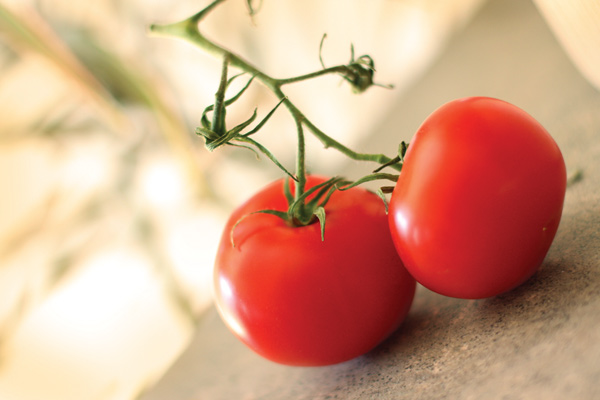Learning your own garden’s water needs is an art form BETTER VEGGIES

By Barb Delisio
OSU Ext. master gardener volunteer
It’s June, and summer is finally here (I think). Hopefully your summer garden has been planted, and all those tomatoes, peppers, zucchini, eggplant and a few of the early spring vegetables are still around to enjoy.
I know you planted those tomato plants 2 feet apart to give them plenty of room to grow. One of the most common problems with tomatoes is that they don’t get enough air circulating through the plant and enough sunlight down through the plant. Tomato cages have been used for ages to hold the plants upright and keep the fruit off the ground where it can rot. The latest idea is that stakes are better to keep the plants off the ground and allow for better airflow. Don’t forget to remove small (2-3-inch) suckers that come up in the crotch between the main stems of the plants. The suckers take energy from the main stem and produce smaller, weaker fruit. Staking, tying and pruning tomatoes can result in earlier season tomatoes, cleaner fruit and less disease. Caged tomatoes are usually delayed in maturing the fruit compared to staked tomatoes.
Mulching with newspaper, dried grass clippings, peat moss, straw, sawdust, etc., will help conserve soil moisture, control weeds and maintain a uniform soil temperature. A uniform temperature helps reduce blossom drop, blossom end rot and leaf roll of tomatoes by maintaining more constant soil moisture. If you’re using grass clippings, make sure the “gifted” grass has not been sprayed with herbicides. Herbicides stay in the clippings and will kill your plants. Herbicides for lawns kill broadleaf vegetation and most vegetable plants.
Watering tomatoes and other crops is more difficult than you might think. Overwatering is just as bad as underwatering. Overwatering can lead to root disease and often death of the root system due to the lack of oxygen in the soil. Shallow watering daily tends to encourage development of a shallow root system. Deep- root watering once or twice a week will encourage the roots to search down deep into the soil for the water, thus producing a stronger, healthier plant with better fruit. Learning how much water to apply to your particular garden is an artform usually developed with experience.
Regarding fertilizing, you should have taken a soil sample in the early spring to know what to add to your vegetable garden before planting. If you didn’t, an application of a general liquid fertilizer at planting would be enough. “Less than average” crops this year this will remind you to take a soil test in the fall. Applying liquid fertilizers weekly or so will only add too much nitrogen, giving you huge, green plants and little or no fruit. Once the flowers have set, a shot of a liquid fertilizer will help, but not until the flowers are out. Remember fruit comes from the flower. If you have done everything correctly, nearly every flower will produce a fruit in your vegetable garden.
You can read about the Top 10 Ways to a Better Veggie Garden at: http://go.osu.edu/top10veggie.
 43
43

